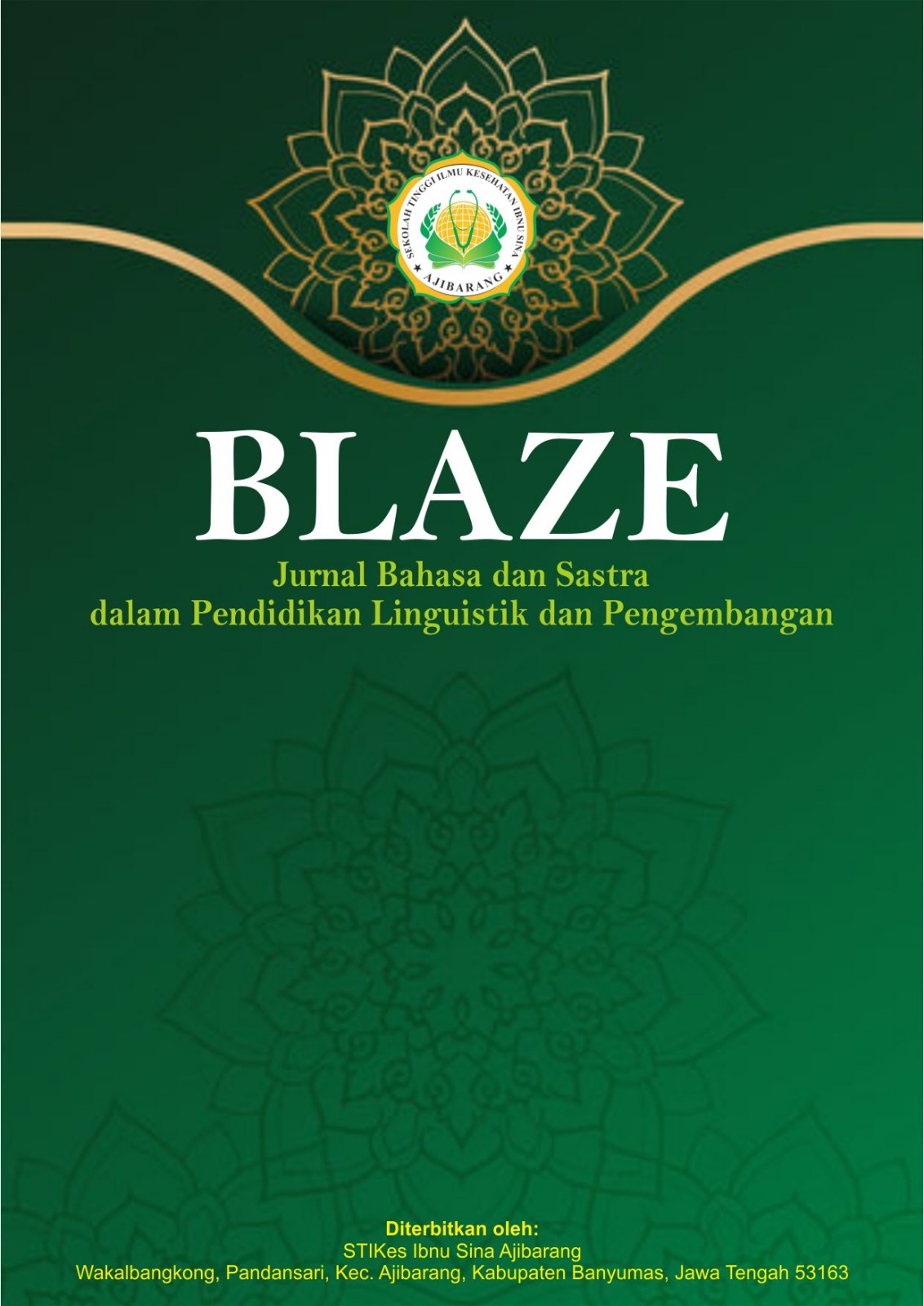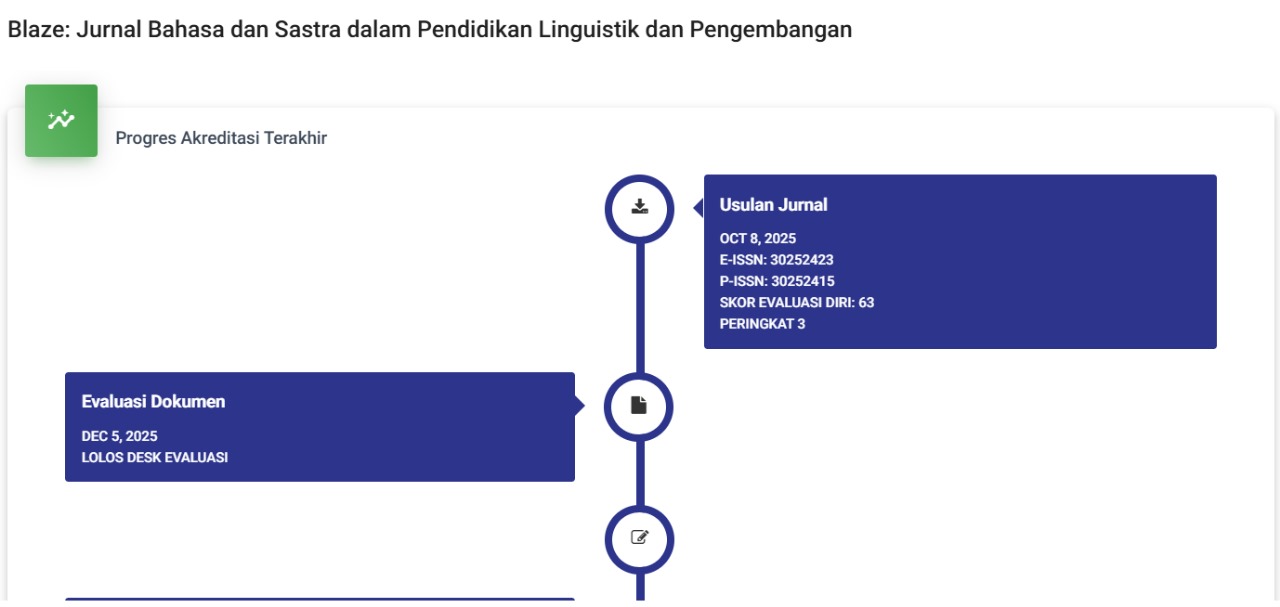Formulating SMART Learning Objectives in EFL Curriculum: A Qualitative Literature Review
DOI:
https://doi.org/10.59841/blaze.v3i3.3013Keywords:
Curriculum design, EFL curriculum, Instructional design, Learning outcomes, SMART learning objectivesAbstract
This literature review investigates the effectiveness of formulating SMART (Specific, Measurable, Achievable, Relevant, and Time-bound) learning objectives within the English as a Foreign Language (EFL) curriculum using a qualitative research method. A systematic literature review was employed to analyze empirical and theoretical studies published between 2015 and 2024. The findings reveal that SMART objectives contribute to increased instructional clarity, learner engagement, and alignment with curriculum goals. Thematic content analysis highlights key benefits, such as improved learner autonomy, language proficiency, and instructional planning. This study provides a structured synthesis for educators and policymakers in designing effective EFL curricula.
References
Abdelhadi, N. (2025). Smart transformation of EFL teaching and learning approaches. Research Studies in English Language Teaching and Learning, 3(1), 33–48. https://doi.org/10.62583/rseltl.v3i1.72
Abdelhadi, N. (2025). Smart transformation of EFL teaching and learning approaches. Research Studies in English Language Teaching and Learning, 3(1), 33–48. https://doi.org/10.62583/rseltl.v3i1.72
Ahmad, S., Rahman, A., & Noor, M. A. M. (2019). Understanding qualitative content analysis in educational research. International Journal of Education and Literacy Studies, 7(2), 123–130. https://doi.org/10.7575/aiac.ijels.v7n2p123
Anderson, L. W., & Krathwohl, D. R. (2001). A taxonomy for learning, teaching, and assessing: A revision of Bloom’s taxonomy of educational objectives. Longman.
Asare, K. B., & Daniel, M. (2021). Enhancing EFL instruction through SMART objectives: A classroom-based study. Language Teaching Research Quarterly, 12(1), 45–58. https://doi.org/10.32038/ltrq.2021.12.01.45
Asrianti, R. N., & Rosadi, A. (2024). Strategies to teach English as a foreign language in Merdeka Curriculum: A systematic literature review. Proceedings Series on Social Sciences & Humanities, 18, 331–340. https://doi.org/10.30595/pssh.v18i.1278
Biggs, J., & Tang, C. (2011). Teaching for quality learning at university (4th ed.). Open University Press.
Cambridge University Press. (2018, September 11). Taking aim: The role of goal setting in an EFL classroom. Cambridge University Press ELT Blog. https://www.cambridge.org/elt/blog/2018/09/11/taking-aim-the-role-of-goal-setting-in-an-efl-classroom/
Dhari, A. W., & Maisarah, I. (2025). Integrating critical thinking into Indonesia’s EFL curriculum: Insights from Bengkulu teachers. Journal of English for Specific Purposes in Indonesia, 4(1), 1–5. https://doi.org/10.33369/espindonesia.v4i1.34754
Doran, G. T. (1981). There's a S.M.A.R.T. way to write management's goals and objectives. Management Review, 70(11), 35–36.
García-Tudela, P. A., Prendes-Espinosa, P., & Solano-Fernández, I. M. (2021). Smart learning environments: A basic research towards the definition of a practical model. Smart Learning Environments, 8, 9. https://doi.org/10.1186/s40561-021-00155-w
Huh, K., & Lee, J. (2019). Fostering creativity and language skills of foreign language learners through SMART learning environments: Evidence from fifth-grade Korean EFL learners. TESOL Journal, 10(1), e489. https://doi.org/10.1002/tesj.489
Huh, K., & Lee, J. (2019). Fostering creativity and language skills of foreign language learners through SMART learning environments: Evidence from fifth-grade Korean EFL learners. TESOL Journal, 10(4), e489. https://doi.org/10.1002/tesj.489
Li, Y. (2024). Aligning curriculum with SMART learning goals for effective lesson planning. In Y. Li, Mastering the art of lesson planning: A practitioner guide for teachers (backed by scientific evidence) (pp. 1-15). CSMFL Publications. https://dx.doi.org/10.46679/9788196780579ch01
O’Neill, G. (2015). Curriculum design in higher education: Theory to practice. UCD Teaching and Learning Resources. https://www.ucd.ie/t4cms/UCDTLP0068.pdf
O'Neil, J. (2005). The power of SMART goals: Using SMART goals to improve student achievement. Eye on Education. https://www.abebooks.com/9781932127874/Power-SMART-Goals-Using-Improve-1932127879/plp
Scribd. (n.d.). Writing SMARTER goals for professional learning and improving classroom practices. Retrieved from https://www.scribd.com/document/741912355/Writing-SMARTER-goals-for-professional-learning-and-improving-classroom-practices
SkillsHub. (n.d.). How to write SMART learning objectives. Retrieved from https://www.skillshub.com/blog/write-smart-learning-objectives/
Torraco, R. J. (2005). Writing integrative literature reviews: Guidelines and examples. Human Resource Development Review, 4(3), 356–367. https://doi.org/10.1177/1534484305278283
Vasbieva, D. G., Sokolova, N. L., Masalimova, A. R., Shinkaruk, V. M., & Kiva-Khamzina, Y. L. (2018). Exploring EFL teacher’s role in a smart learning environment: A review study. XLinguae, 11(2), 265–275. https://doi.org/10.18355/XL.2018.11.02.21
Downloads
Published
How to Cite
Issue
Section
License
Copyright (c) 2025 BLAZE : Jurnal Bahasa dan Sastra dalam Pendidikan Linguistik dan Pengembangan

This work is licensed under a Creative Commons Attribution-ShareAlike 4.0 International License.








